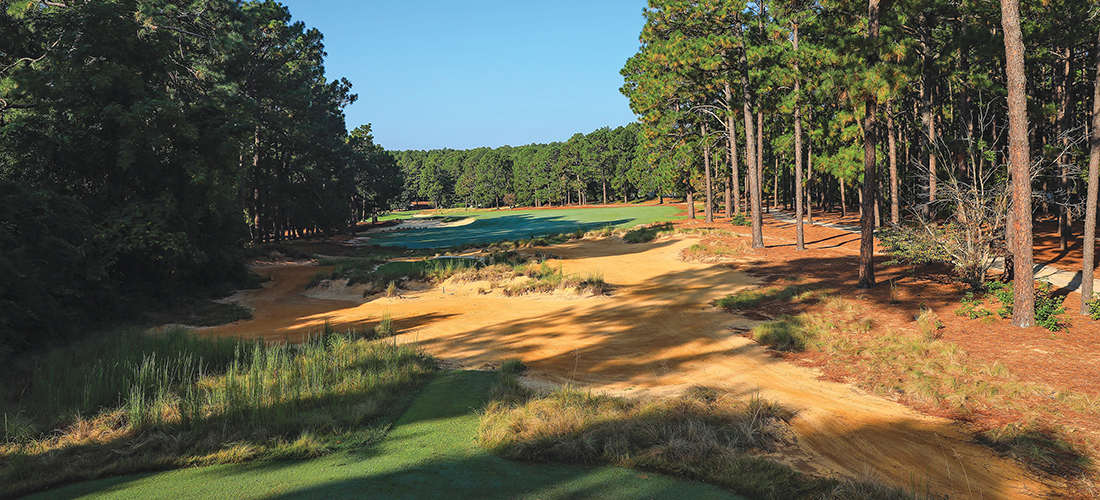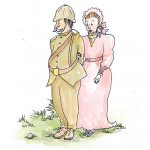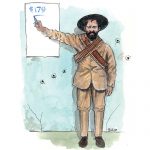
Eye of the Needles
The USGA returns to a polished gem
By Lee Pace
The continued evolution of Donald Ross’ vintage Sandhills golf courses back to a more unkempt and rugged look over the last decade will be on display in May when the United States Golf Association stages its U.S. Women’s Senior Open at Pine Needles Lodge & Golf Club in Southern Pines. The 1928 course that has hosted three U.S. Women’s Opens has come under the nipping and tucking auspices of architect Kyle Franz over the last two years and will offer a visual presentation more in keeping with what Ross cobbled from the sandy ground nearly a century ago, and certainly integrate some shot values more consistent with the Scottish designer’s original intent.
Franz ran a bulldozer and other shaping and construction implements on Pinehurst No. 2 in 2010-11 under the employ of Bill Coore and Ben Crenshaw as the course was transformed from its sleek green appearance to a sandier landscape chock full of wire grass and jagged edges. He then took his skills and initiative and pitched Kelly Miller, president of the company that owns Pine Needles and is a partner in Mid Pines Inn & Golf Club, on the idea of restoring Mid Pines, a 1921 Ross design, in a similar fashion. That job was completed in 2013 to rave reviews, including designation by Golf magazine as the Best Course Restoration of the year.
“Except for lacking the Pacific Ocean, it almost has the visual appeal of Cypress Point,” magazine course rating panelist John Dempsey said. “It almost looks like the old pictures you see of Mid Pines of people wearing coats and ties and watching a match finish on 18. I can’t say enough about it. Going out and playing nine holes in the last of the winter sunlight in late afternoon, the visuals are fabulous.”
The next step was to apply many of the same ideas to Pine Needles, across Midland Road. The hook of converting Pine Needles’ greens from bent to MiniVerde Bermuda — as they had been at Mid Pines — was a convenient base from which to operate. Pine Needles closed during the summer of 2016 for the greens conversion, and Franz used that period, as well as the following two winters, to rebuild every bunker on the course, rearrange the fairway dimensions and add some new tees.
“The old stigma on Bermuda greens is that they were grainy and slow, but that’s not true anymore with the new ultra-dwarfs,” Miller says. “We had nearly 50 days with temperatures in the 90s during the summer of 2015, and it was a struggle to keep the bent healthy. Meanwhile, the greens really thrived at Mid Pines. After watching them closely for two years, we thought it was time to pull the trigger at Pine Needles.”
Franz grew up playing golf in Oregon, and when it came time to pick a college, he knew what he wanted: Oregon State’s turf management program. One summer he landed an internship working for architect Tom Doak on Pacific Dunes, the second of five courses created at Bandon Dunes Golf Resort, and later he met Coore and Crenshaw, who were designing another course there named Bandon Trails.
“Being an Oregonian, it was a really special experience,” Franz says. “Just being able to work on a piece of land like that was really cool. It got me interested in links-style architecture, and I had always been a fan of classic courses.”
Now 37, Franz has worked in Scotland, Australia and California, and more recently was on Gil Hanse’s staff in the design and construction of the course in Rio de Janeiro used for the 2016 Olympics. He’s also just finished a multi-year project at the Country Club of Charleston, which will be the venue for the U.S. Women’s Open one week after the Pine Needles Senior Open.
Among the tweaks Franz made that golfers who played Pine Needles in 2007 and are returning for the first time a dozen years later will notice are these:
* Expanded fairways to original margins to 38 to 60 yards;
* Restored and/or reconfigured all 70 bunkers to Ross’ rolled-over style of the mid-to-late 1940s and added eight new bunkers to challenge modern length;
* Re-established what Franz calls “horse-and-blade caliber micro-contours” in the greens to add interest and challenge to the putting element;
* Removed 11 acres of Bermuda rough and replaced them with native hardpan, wire grass and pine straw;
*Replaced the uniform-looking expanses of love grass in front of many tees with a more rugged “Pine Valley” look of sand and native growth.
“Overall, it’s a little more clean and manicured look and different from Mid Pines,” Franz says. “There we went guns blazing with the native stuff around the edges. At Pine Needles now we have a cool and rugged look, but it’s a little more manicured than No. 2 and Mid Pines.”
The championship will be played May 16-19 and is the second Women’s Senior Open, christened last year at Chicago Golf Club. Laura Davies, who finished in the top five at Pine Needles in 1996 and 2007 but missed the cut in 2001, won the championship by 10 shots over Juli Inkster. The field included noted LPGA players Danielle Ammaccapane, Helen Alfredsson, Liselotte Neumann, Rosie Jones, Hollis Stacy, Amy Alcott, Betsy King, Pat Bradley and Jane Geddes. The course will play just under 6,100 yards.
“The Women’s Senior is similar to the U.S. Amateur or Walker Cup in size and scope,” Miller says. “There are basically no grandstands, though we might put one on the 18th green. There are no skyboxes. It’s a very fan-friendly event. We rope off the tees and greens, but otherwise spectators walk with the players.”
The Women’s Senior is something of a prelude to the 2022 Women’s Open at Pine Needles, and having tees that can stretch the entire course to 7,000 yards will give USGA officials adequate flexibility when they host the longer LPGA players vs. the over-50 crowd.
“I think the Bermuda greens and wider fairways will work well for both events,” Miller says. “In Ross’ era, golf was played more along the ground. Now it’s more in the air. But the Bermuda greens are firmer and offer a more challenging surface. It’s more important now to be on the proper side of the fairway to have the shot you need to knock it close.
“For ’22, they can lengthen some holes, but I don’t think you’ll see a lot more rough. I think Donald Ross would have loved testing the players with longer shots and the strategy of proper placement of the tee shot versus having penalizing rough.”
One change that embodies the new-look Needles as much as any is the bunker complex down the left side of the par-4 18th hole. The finishing hole was actually the first hole of the course as it was designed, when the St. Joseph of the Pines assisted-living facility was the original Pine Needles hotel. When Peggy Kirk Bell and husband Warren acquired the golf course in the 1950s, they reconfigured the start and finish to be more convenient to the new lodging facilities they built on the southwest side of the course. Thus the second hole became the first and the first became the 18th.
Eighteen plays downhill and before there was no trouble down the left side. Now there is a natural sandscape with miscellaneous vegetation and whatever nature might deposit there, from pine needles to cones to wire grass.
“You could hit a speed slot on that side and the ball would roll forever,” Franz says. “What was conceived as a relatively easy starting hole didn’t stand up as a finishing hole.”
Miller remembers playing the 18th when he first visited Pine Needles in 1980 with a driver and 7-iron. “And that was with a persimmon wood and balata ball,” he says. “If you looked back up the fairway from the green, it looked like a bowling alley. Ross always had great motion to his fairways. Now it’s a cool look. You don’t just see all grass and two straight lines. This will make for a memorable finish.
“The best look at the flag is from the left side of the fairway. You’ll have to pause and think how far you can go over there.”
You blink around the Sandhills and realize it’s been five years since that back-to-back Open double-header on No. 2 in 2014. The chapters keep unfolding, as they have for more than a century. PS
Lee Pace has written about the Pinehurst-area golf scene for more than 30 years, including authoring Sandhills Classics — The Stories of Mid Pines & Pine Needles. Write him at leepace7@gmail.com





